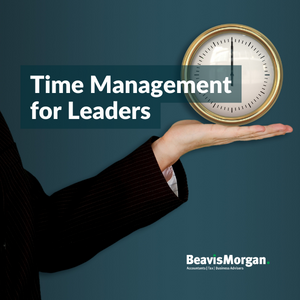An in-depth analysis of how CEOs allocate their time, published in the Harvard Business Review (HBR) and entitled How CEOs Manage Time has yielded some interesting findings.
As part of their research, Michael Porter, a University Professor at Harvard, based at Harvard Business School, and Nitin Norhia, dean of Harvard Business School, asked 27 CEOs, at companies with an average annual revenue of $13.1 billion at the time if the study, to document their time in 15-minute intervals for three consecutive months.
Speaking to Business Insider, Porter says that one of the defining characteristics of the most effective CEOs, when it comes to time management, is that they are agenda-driven: “A CEO needs to have their own personal agenda that they determine is where they want to spend their personal time,” adding that they don’t operate well if they need to be reactive each time a request comes in.
Interestingly, however, the findings show that CEOs spend on average 36 per cent of their time “in a reactive mode, handling unfolding issues, both internal and external”.
“It’s essential for CEOs to figure out appropriate responses to these unfolding situations, because, if they don’t, they could find themselves spending 100 per cent of their time deliberating how to address these scenarios.” The HBR article cites a member of the CEO’s team leaving a meeting in a distressed state as an example.
And, whilst the research focusses on CEOs in particular, the authors of the report say that the findings apply to leaders in general. Indeed, most managers can relate to the feeling of juggling a number of employee distractions whilst trying to concentrate on any one particular project.
Planning for “reactive work” may therefore be the best option for busy managers. But, how is it possible to plan your schedule, if you don’t know from one day (or indeed hour) to the next what scenarios are about to unfold?
Writing for Forbes, a professor of management at the London School of Economics, Rebecca Newton, says leaders need to “plan realistic reactive time.” For example, schedule 60 per cent of your day if you know that you spend around 40 per cent reacting to employee demands and other changing circumstances.
However, a professor of computer science at Georgetown University and the author of “Deep Work”, Cal Newport, writes that every minute of every work day should be considered – adding that planning for “reactive work” should be factored in.
Newport also suggests that leaders “give open-ended reactive blocks secondary purposes: e.g. “process client requests; if I have downtime during this block, work on project X.”
No matter how time you spend planning your work day, the key message is that flexibility is key for both CEOs and leaders at all levels. If nothing else, you will make sure that you enable yourself to better keep to your agenda and achieve all that is expected of you in a day.
About Beavis Morgan’s SME Adviser Series
It’s not only the nature of your work, but also the lifestage you have reached that will define the kind of advice and support you need. At Beavis Morgan, we can help you make critical decisions at each phase of your development cycle, from startup guidance to exit strategies, and everything in between.
Our Beavis Morgan SME Adviser Series is a collection of articles providing practical advice and tips to help you start up, manage and grow your business successfully, and achieve your goals and ambitions.
For more information about how we can help you and your business, contact your usual Beavis Morgan Partner or email info@beavismorgan.com.

